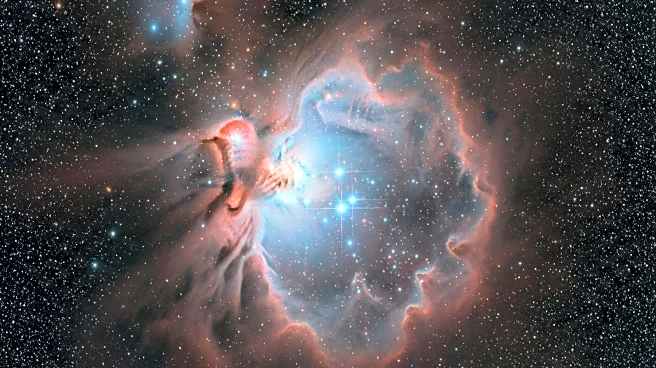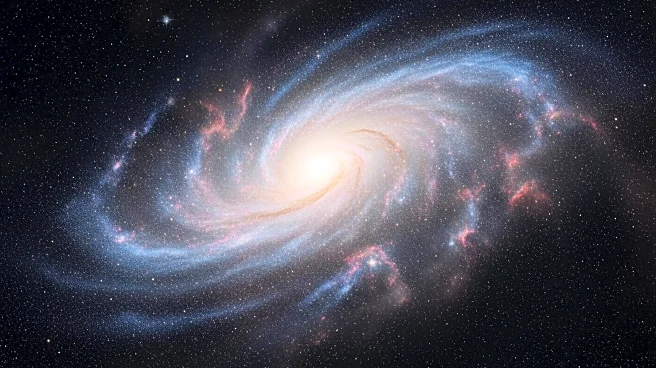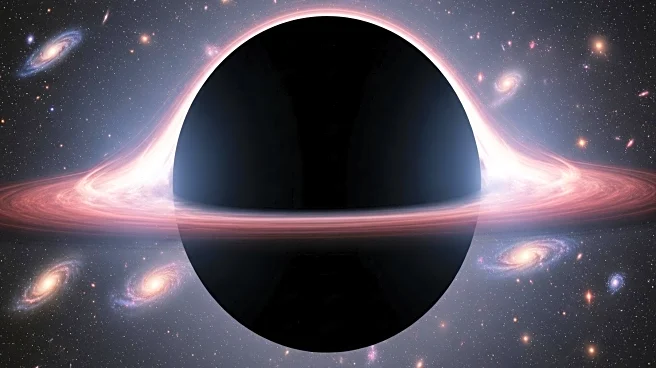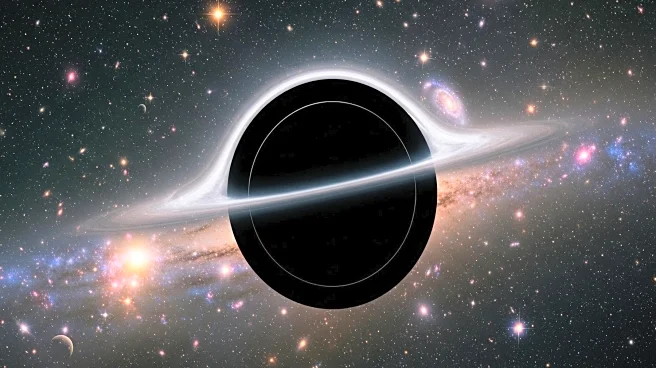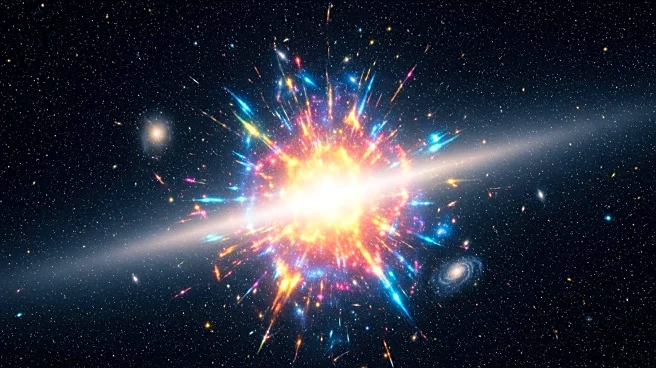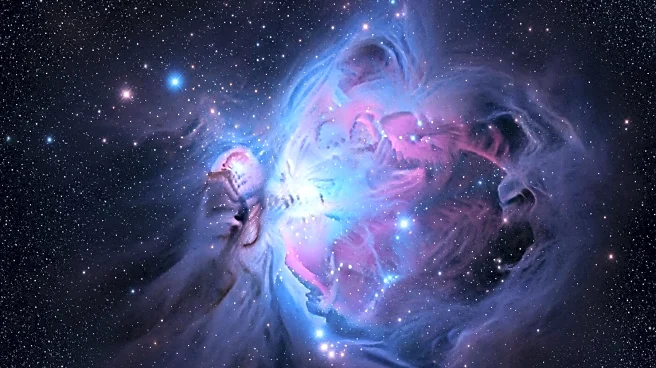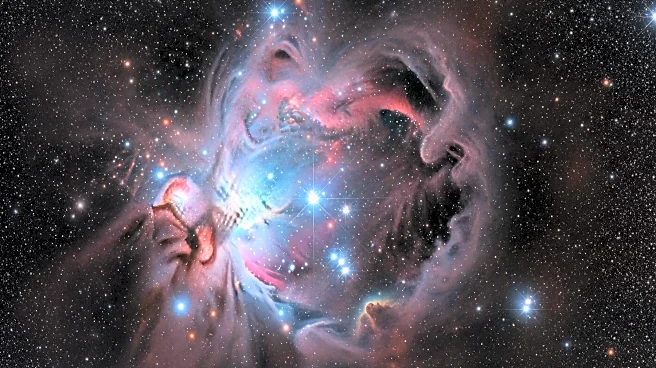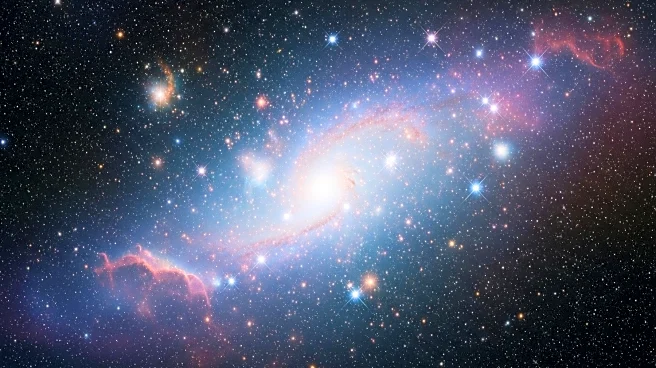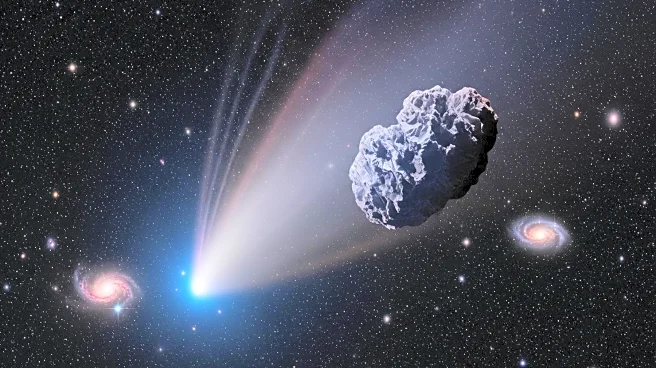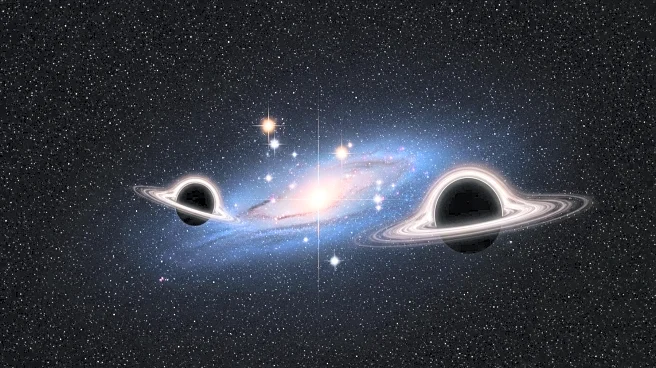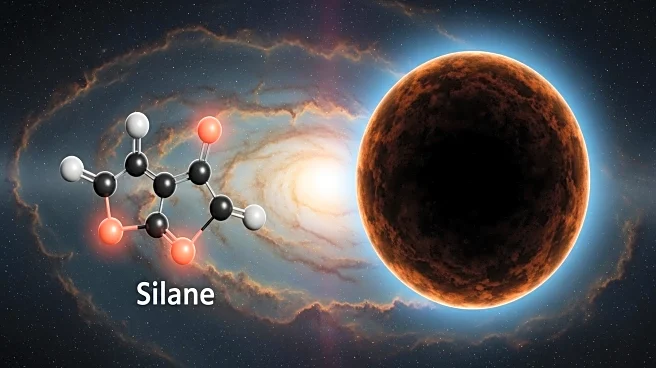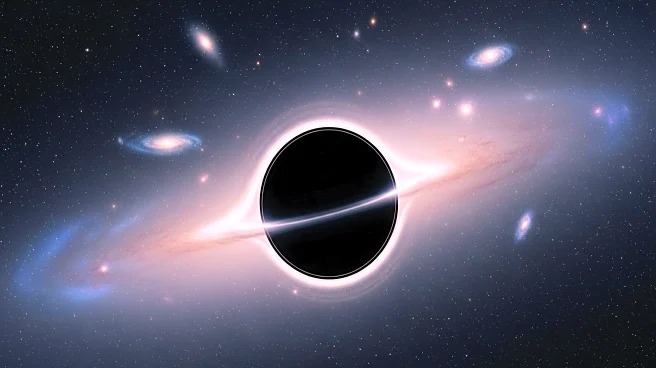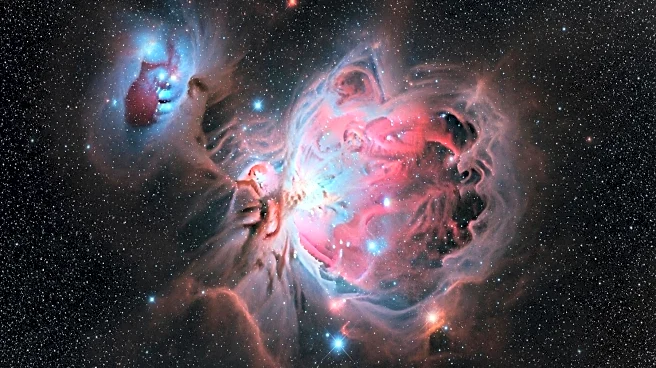What is the story about?
What's Happening?
The James Webb Space Telescope (JWST) has captured a remarkable image of the star cluster Pismis 24, located in the core of the Lobster Nebula, approximately 5,500 light-years away within the Milky Way galaxy. The image reveals the binary star Pismis 24-1, with solar masses of 74 and 66 respectively, surrounded by jagged formations of gas and dust sculpted by intense radiation from young, hot stars. This discovery builds on previous observations by the Hubble Space Telescope in 2006, which identified Pismis 24 as a binary star system. The JWST image is reminiscent of the Cosmic Cliffs, another stellar formation carved by ultraviolet radiation and stellar winds from massive stars.
Why It's Important?
The JWST's ability to capture detailed images of distant star clusters like Pismis 24 enhances our understanding of stellar formation and the dynamics within nebulae. These observations provide valuable insights into the processes that shape star clusters and the role of radiation in sculpting cosmic structures. The data gathered by JWST contributes to the broader field of astrophysics, offering a deeper understanding of the universe's composition and the lifecycle of stars. This information is crucial for scientists studying the evolution of galaxies and the conditions that lead to star formation.
AI Generated Content
Do you find this article useful?
